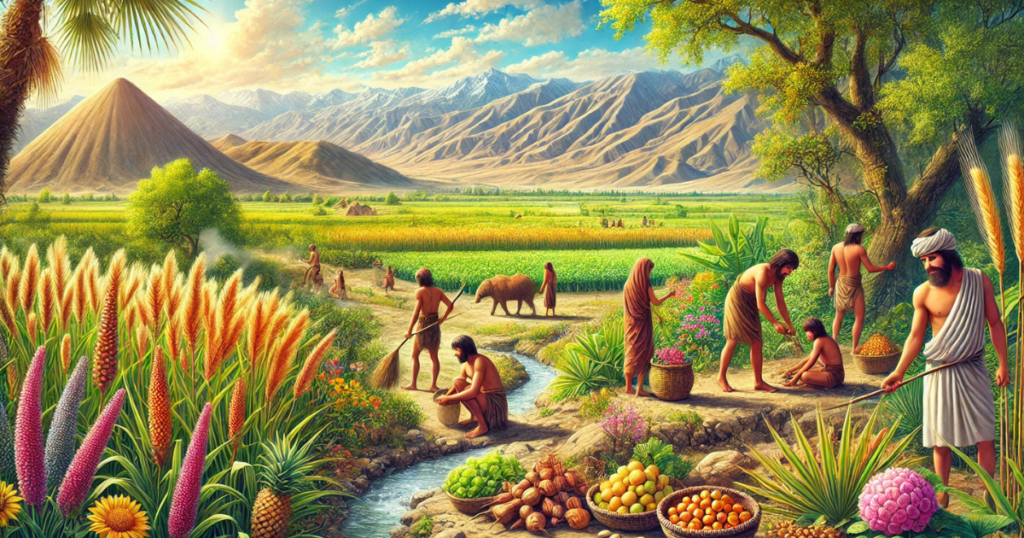Understanding the diets of ancient civilizations offers a fascinating glimpse into their daily lives, survival strategies, and cultural practices. In the case of Ancient Humans Iran Plant Heavy Diet, studies show that a plant-heavy diet was a fundamental aspect of their nutrition. This article explores how these ancient communities relied on plant-based resources for sustenance and the implications this has on our understanding of early human societies and modern nutrition.
The Role of Plants in Ancient Iranian Diets
Ancient Humans Iran Plant Heavy Diet relied heavily on plants. These societies consumed a variety of wild plants, which were essential for their nutrition. Grasses, seeds, tubers, fruits, and nuts were commonly consumed, providing critical nutrients for survival.
Plants offered vital vitamins, minerals, and carbohydrates. They also helped with digestive health and sustained energy. Iran’s climate allowed ancient humans to harvest a variety of plants year-round, making plant-based foods a significant part of their diet.
Also Read: Can You Use an 11V Battery in a Hubsan H501SS
Archaeological Findings Supporting the Plant Heavy Diet
Archaeological evidence from ancient Iran sheds light on early diets. Excavations have uncovered plant remains such as seeds and grains. These findings show that plants were a main food source. Tools found at these sites were used to gather, process, and prepare plants.
The examination of fossilized remains also supports this view. Studies of bones and teeth indicate that ancient humans had diets rich in plants. The wear on their teeth suggests consumption of fibrous plant matter, highlighting the importance of plants in their diets.
How Ancient Humans in Iran Relied on Plant Resources
Iran’s diverse geography played a significant role in shaping the diets of its ancient inhabitants. The fertile plains, mountains, and deserts provided a wide range of plant resources. Early humans adapted by using plants not only for food but also for medicine and shelter.
Seasonal changes also influenced their diet. During warmer months, they harvested fruits, vegetables, and herbs. In colder periods, they relied on stored grains and dried plants. Early humans also began cultivating plants, which led to a more sustainable food source.
The Evolution of Diets in Ancient Iran
Dietary practices in ancient Iran evolved over time. Initially, humans relied on hunting and foraging. However, as agriculture developed, plants became a central part of the Ancient Humans Iran Plant Heavy Diet. Grains like wheat and barley were cultivated, and legumes like lentils and peas became staples.
The shift to agriculture provided more stable food supplies. This led to the growth of complex societies and changed the cultural landscape of ancient Iran. The ability to cultivate plants played a major role in these developments.
Modern Insights and Relevance of Ancient Plant Heavy Diets
The study of the Ancient Humans Iran Plant Heavy Diet offers valuable lessons for modern nutrition. Today, many plant-based diets draw inspiration from ancient eating habits. These diets offer health benefits like improved heart health, reduced risk of chronic diseases, and better digestion.
Moreover, the ancient reliance on plants emphasizes sustainability. By understanding how ancient humans used locally available plants, we can create more sustainable food systems today. Incorporating more plant-based foods into our diets can also promote environmental health and sustainability.
Conclusion
The study of Ancient Humans Iran Plant Heavy Diet provides an intriguing look into the past and offers valuable lessons for the present. From the nutritional benefits of plants to the impact of agriculture on early societies, ancient Iranian diets reveal much about their lifestyles. By learning from these ancient practices, we can create healthier and more sustainable diets today. The Ancient Humans Iran Plant Heavy Diet serves as both a window into the past and a model for modern nutrition and sustainability.

